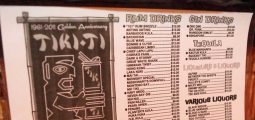No Bubble Trouble

I am coming up on my 20-year anniversary as a bartender/hospitality professional, which has caused me to reflect on how much the beverage industry has changed in the Midwest during that time. Like many who enter the industry, I began bartending as a means to an end to put myself through college. As the years progressed, however, the debt I incurred from student loans ironically boxed me into the business long-term; I simply could not afford to take an ‘entry-level, professional’ pay scale position, and bartending was paying my bills. Although, it was easier with the help of my student loan payoff calculator – this way it was all organised for me and I could see the monthly outgoings for it, whilst ensuring a had a little left over each month for myself. Although I must admit, this wasn’t a lot. Either way, the calculator and bartending job was supporting me in the process of paying this off.
I developed a passion for the dynamic atmosphere, the nightlife, the opportunity to meet new and interesting people on a daily basis, and the reward-based compensation: the harder you work, the more you make. I derived a certain pride from offering real added value to my guests’ experience through product knowledge, attention to service detail, remembering names and continuing conversations that brought them back, etc. I began to embrace my bartending as a career path, and to shed the yoke of needing to ‘get a real job’. I placed my faith in the industry making a transition from predominantly quantity-consumption business models to those geared toward the quality consumer…and it has paid off.
The hospitality industry, like most industries, has spent the last several decades pandering primarily to the baby boomer – their standards for service/atmosphere, their income bracket, their limited product knowledge, their limited access to information, etc. We designed everything about our businesses around the consumer behavior of a generation that is now dying off. We sacrificed brand identity to accommodate the ridiculous notion that ‘the customer is always right’. We substituted grandiose aesthetics for hospitality. We fell for the ease of selling terrible products, at an offensive markup, to people who didn’t know any better. Essentially, we got too comfortable with a very large margin for error. As millennials take over the consumer market, however, with an evolved consumer profile and unprecedented access to trend/product information, the rules of business are changing. For those who insist on clinging to an antiquated business model, that will mean failure. For those evolving to meet new demands, however, this means incredible opportunity. Nowadays people that are trying increase their capital can do so in a number of ways with the internet as a tool of knowledge and education by their side, allowing them to make informed decisions, for example, these millennial money making methods can allow those with no financial expertise to make smarter decisions when investing and saving their hard-earned cash.
It’s time to stop whining about a ‘bubble that’s bursting’ in hospitality. There is no bubble. There are a lot of people who have made poor investments as a result of not doing math, not developing holistic business plans, not taking the time to conceptualize a unique brand identity, not putting the proper skill sets to work, and not being able to forecast/respond to a changing industry. During the dot-com era, when investment capital was in excess, extravagance became an aesthetic standard in our industry. Hospitality took a back seat, causing an industry identity crisis, of sorts. Never mind that the drinks/food/service suck…they have an ultra-lounge! With a fireplace! Or, a waterfall! Or, both! Whatever. A lot of people came into money quickly, which quickly led to them wanting to actualize their dream of owning a bar. Financing was not an issue, but since there was no real experience or passion for hospitality at the helm, extravagant aesthetics dictated the experience. Never mind that the whole thing was a money pit, profitability mattered not. The industry began to adopt the whole charade as a standard. If you wanted to compete for the same audience, you needed that ultra-lounge/fireplace/waterfall. The consumer had been successfully trained on what to expect…the biggest, brightest, flashiest craptastic show that money could buy.
Essentially, a bunch of people with money to burn created an illusion of success that began to draw in aspiring owners/investors without the same, expendable capital. Suddenly, people with a lot to lose were losing a lot. No one was actually sitting down with a brand development/business plan and doing the math. They had the ultra-lounge! They had the fireplace! They had the waterfall! So, why wasn’t it working?!?!?!? The truth is because it doesn’t, and it never has. As an industry, we have conceptually confused the words ‘recognition’ and ‘success’. Success, to most, is necessarily tied to profitability.
The good news is that the model geared for success into the next phase of hospitality is smaller and more manageable, allowing for a potential restart of entrepreneurship in the industry. One could argue that the baby boomer obsession with extravagant cruise ships is quickly being replaced by the millennial appreciation for the well-crafted rowboat. They seek smaller, more intimate atmospheres, and personal experiences with quality products. Many are quick to suggest that millennials are ‘spoiled’ and need to feel ‘special’. The good (or bad) news for hospitality professionals is that making people feel special is supposed to be our area of expertise! Hospitality is currently being called out to be what it was supposed to be all along! In sum, if you have put in your requisite 10,000 hours toward developing a passion for delivering quality products and experiences, then you will weather this consumer changing-of-the-guard with ease. As a bonus, you will actually realize greater potential for smaller (i.e. lower cost) start-ups than we have seen in decades. If you have focused your energy, however, on interior design and marketing gimmicks, good luck. You’ve got some catching up to do.
Related Articles
2018 Happy Hour Map
Everyone loves happy hour and we’re no different here at Food & Spirits Magazine. We’ve created a map of
Letter From the Publisher: Issue 10
Big and exciting changes are afoot at Food & Spirits Magazine. I’m happy to announce that FSM has formed a
The Last of the Great Bear Men: Scott Schreiner
On June 21st 2009, Scott Schreiner lost his battle with brain cancer and passed away. He was a mentor to
No comments
Write a commentOnly registered users can comment.















